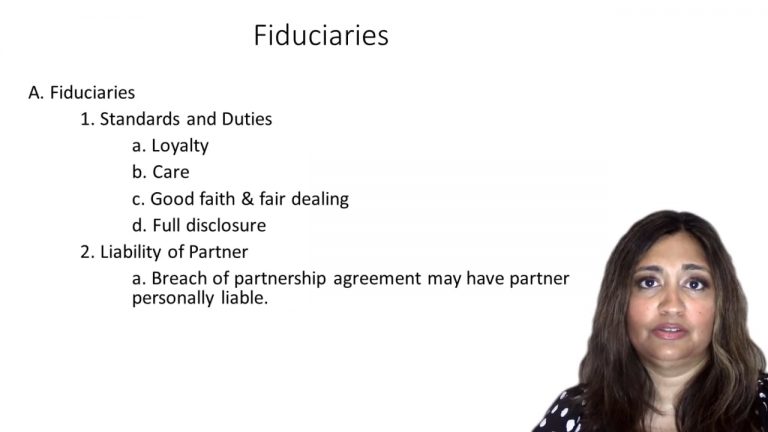SmartBrief
Confirm favorite deletion?
Corporations Keyed to O’Kelley
Starr v. Fordham
Citation:
648 N.E.2d 1261 (1995)Facts
The plaintiff was a partner in the Boston law firm Foley, Hoag & Eliot. The plaintiff was actively seeking to leave the firm in early 1984. During this time, the founding partners were also partners at Foley Hoag. They agreed that they would withdraw from Foley Hoag in early 1985 to establish a new law firm with another established Boston attorney, Frank W. Kilburn. The plaintiff withdrew from Foley Hoag on March 1985. Prior to executing the partnership agreement, the plaintiff informed Fordham that certain provisions in the agreement disbursed him. Fordham dismissed the plaintiff’s concerns, telling him to take it or leave it. The founding partners each executed the partnership agreement and the plaintiff also signed. In August 1985, Kilburn withdrew from the firm. Subsequently, the firm assumed the name Fordham & Starrett. The founding partners had divided the firm’s profits equally among the partners. When the plaintiff withdrew, the founding partners determined the plaintiff’s share of the firm’s profits to be 6.3% of the total profits. The founding father assert that they did not violate their fiduciary duties and the implied covenant of good faith and fair dealing when they allocated to the plaintiff only 6.3% of the firm’s profits for 1986.
Only StudyBuddy Pro offers the complete Case Brief Anatomy*
Access the most important case brief elements for optimal case understanding.
*Case Brief Anatomy includes: Brief Prologue, Complete Case Brief, Brief Epilogue
- The Brief Prologue provides necessary case brief introductory information and includes:
Topic:
Identifies the topic of law and where this case fits within your course outline.Parties:
Identifies the cast of characters involved in the case.Procedural Posture & History:
Shares the case history with how lower courts have ruled on the matter.Case Key Terms, Acts, Doctrines, etc.:
A case specific Legal Term Dictionary.Case Doctrines, Acts, Statutes, Amendments and Treatises:
Identifies and Defines Legal Authority used in this case.
- The Case Brief is the complete case summarized and authored in the traditional Law School I.R.A.C. format. The Pro case brief includes:
Brief Facts:
A Synopsis of the Facts of the case.Rule of Law:
Identifies the Legal Principle the Court used in deciding the case.Facts:
What are the factual circumstances that gave rise to the civil or criminal case? What is the relationship of the Parties that are involved in the case.Issue(s):
Lists the Questions of Law that are raised by the Facts of the case.Holding:
Shares the Court's answer to the legal questions raised in the issue.Concurring / Dissenting Opinions:
Includes valuable concurring or dissenting opinions and their key points.Reasoning and Analysis:
Identifies the chain of argument(s) which led the judges to rule as they did.
- The Brief Prologue closes the case brief with important forward-looking discussion and includes:
Policy:
Identifies the Policy if any that has been established by the case.Court Direction:
Shares where the Court went from here for this case.
Topic Resources
Topic Outline

 3m 15s
3m 15s